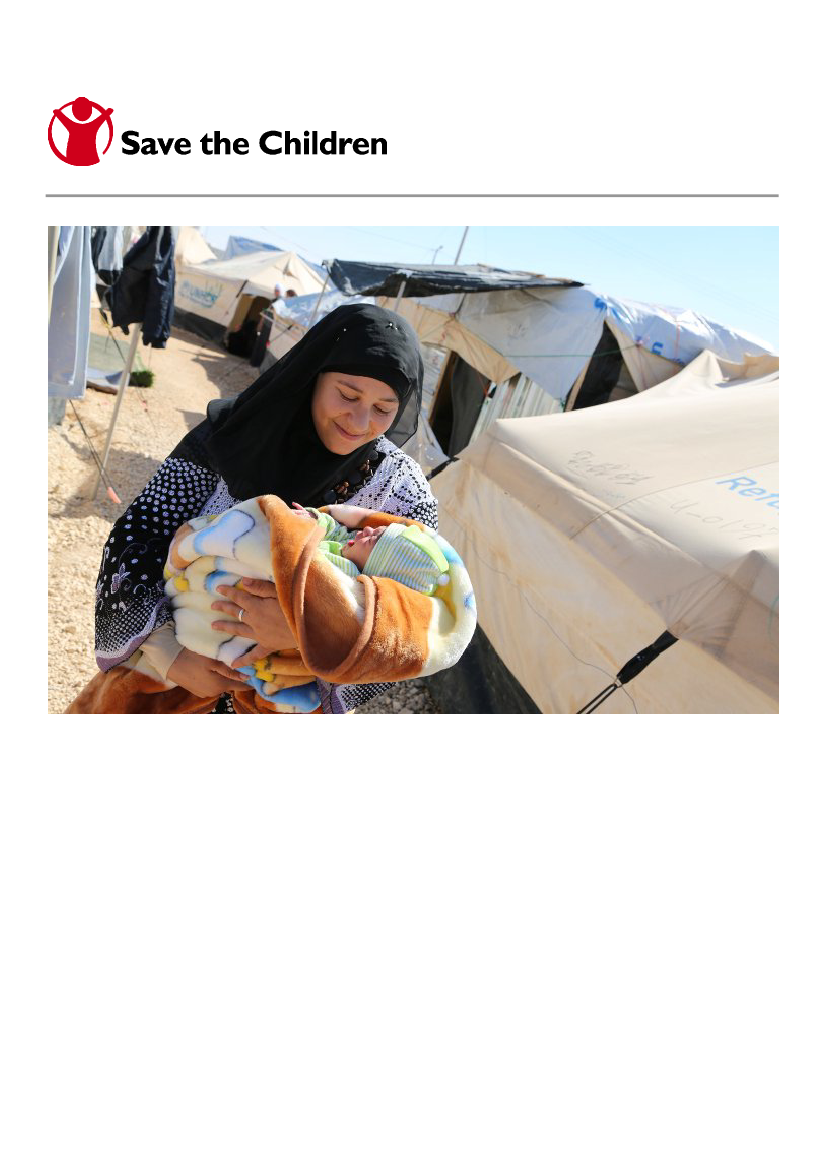Case Studyme laugh. There was this one lady who had fed her newborn with yoghurt and sugar and I told her she was committing acrime. The majority of people is not educated and doesn’t know those things. Then there were these friends of ours in thecamp (Zaatari) that we have befriended after we arrived. They have two children, an infant and a toddler and they madethem share a pacifier. At some point when no one was watching, I threw the pacifier away. It wasn’t hygienic to have themshare it. I am a very social person, I tell people, even if I don’t know them, that they are doing things wrong.”Interview conducted by Hedinn Halldorsson, Red Barnet DK; during an assignment to Jordan in February 2013.
Scene-setting information
The interview takes place in the family’s tent in Street 6 in Zaatari camp. There is a single light bulb hanging in the tent’sceiling, there is a gas heater on the ground, four matresses and piles of blankets.Project information and major issues
Save the children Jordan participated in the interagency rapid MUAC assessment for 845 children under 59 months ofage at the Zaatari camp in September 2012. Data on MUAC, presence/absence of edema, age, gender and presence ofillness was collected. The results indicated that nearly 50% of the children surveyed had been unwell with diarrhoea,upper respiratory infections or other illness within the reporting period, and that the rates of malnutrition were low. A keyrecommendation of the assessment was to “initiate preventive and nutrition promoting services such as IYCF andmicronutrient distribution. That is why two breastfeeding caravans were established to provide safe and calm areas formothers to breastfeed and to receive the right education and awareness about feeding for PLW and infants.Breastfeeding shawls were distributed to each pregnant and lactating woman (PLW) to ensure privacy and modesty whenbreastfeeding in the community. A team of breastfeeding counsellors and community mobilisers have been trained toprovide breastfeeding support and re-lactation counselling, in the community, the IYCF caravan(s) as well as the JHASclinic. Education sessions have been conducted by Nutrition Educators on maternal nutrition, infant and young childfeeding and other topics as requested by women. High energy snacks to PLW’s and children under 5, are beingdistributed, and water is also available in the caravan(s), as incentives for attending education sessions. A bottle‘amnesty’ is also being conducted from both caravans, with a suitable plastic cup being provided to each mother whoreturns a bottle that was given during a previous distribution. Advocacy activities including the promotion anddissemination of the BMS code, and attendance at coordination meetings are being carried out. Infant formula is currentlyonly available via prescription in Za’atari camp, after an assessment by the Midwife, at the JHAS/UNFPA clinic.



